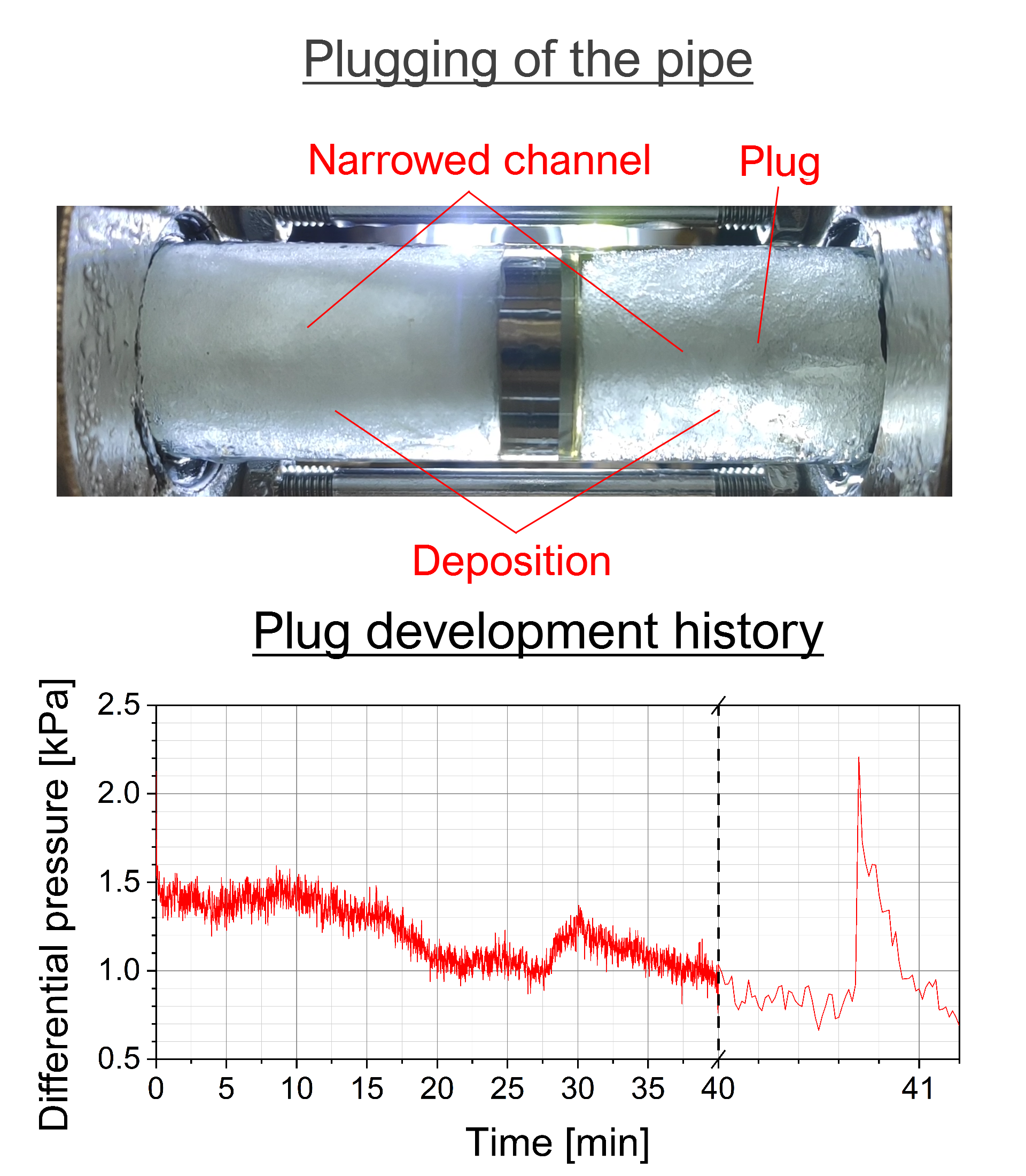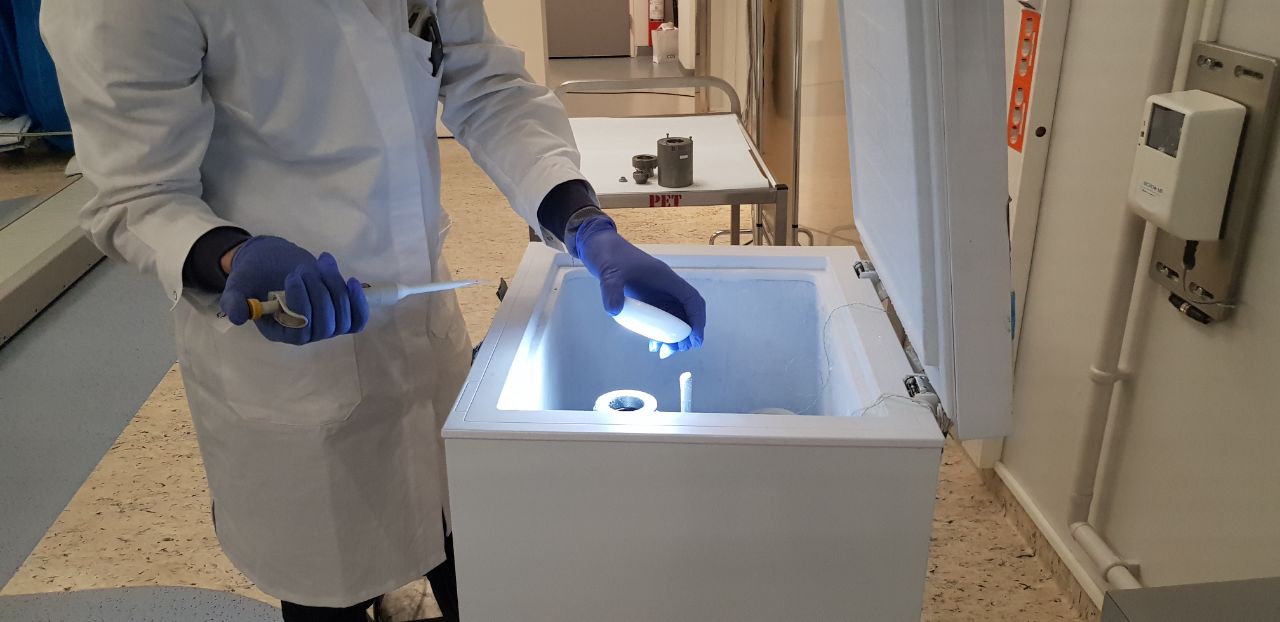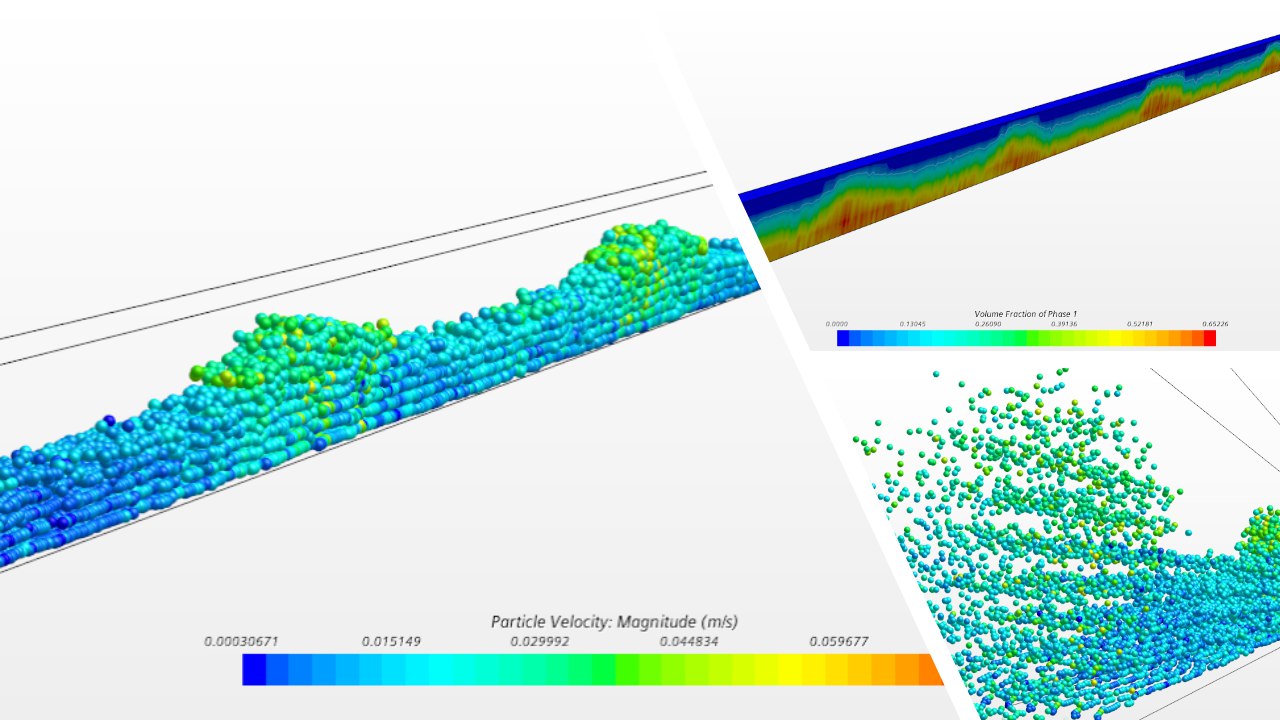
Fundamental studies of plugging in multiphase flows with adhesive particles
This project considers a well-known but not entirely understood phenomenon: plugging of tubes or pipes by sticky particles. With a novel approach we can accurately simulate attractive particulate interactions on "particle-by-particle" principle while being computationally intensive to reproduce a real-scale plug.
Project owner
Western Norway University of Applied Sciences
Project period
January 2020 - December 2024
Project summary
There are cases when a lot of particles safely flow in a pipe without leading to blockage; whereas even a trace amount of solids may shut the flow.
To understand more about plugging, we reproduce this process in the lab using a new experimental facility that has been recently launched at Western Norway University of Applied Sciences.
Computer models of the experiment help us to depict numerou interactions between the flow and the particles, and, to track how they bond together building the plug.
During the project we will closely work together with our international partners.
Project description
Fundamental studies of plugging in multiphase flows with adhesive particles
When the sticky particles are dispersed in a pipe flow they may agglomerate and deposit on the walls. In many cases this leads to formation of plugs that block the pipe. The problem is crucial for the processing industry as technological plugs lead to unwanted environmental and financial loss. Even more dramatically, plugs in blood vessels disorder hemodynamics, increasing mortality risk.
Although plugging is common in daily life (e.g. sink clogging), the process is driven by complex inter-related phenomena and therefore is not entirely understood. This project, first of its kind, aims to investigate plugging by means of numerical modeling. In contrast to previous studies, the model, based on a revisited CFD-DEM principle, will accurately simulate attractive particulate interactions on "particle-by-particle" principle while being computationally intensive to reproduce a real-scale plug.
The model will implement collisional schemes already developed by the applicant. The accuracy of the model will be verified with the high-resolution positron emission particle tracking technique (PEPT).
An important advantage of the project is to elucidate plugging with PEPT, that has never been done before.
Globally the project will provide a fundamental understanding of the influence of dimensionless flow parameters on the kinetics of plugging. Flow maps of the plugging regime are among the most important deliverables of the planned study. They will provide the Norwegian industry with a valuable tool for avoiding plug formation already at the design stage.
This project will establish a new direction at HVL, aiming to increase levels of environmental safety and production efficiency for the Norwegian processing industry. This activity connects to our recently launched PhD program in engineering computing and builds a new inter-disciplinary research group in Western Norway, collaborating with already established researchers in Norway and abroad.
Flow loop experiments
Plug formation at the local pipe constriction in the flow laden by cohesive particles was studied in a flow loop.
The loop is equipped with a horizontal transparent pipe with an orifice. A mixture of decane and ice particles is used in the experiments to make the slurry cohesive. Observation of the plug formation goes at different mass flow rates and volume fractions of the particles.
It was found that the orifice induces the formation of particle deposition. Over time, the deposit grows downstream and upstream, forming an extended narrow channel. This channel is likely to be blocked by massive porous agglomerates of particles formed in the flow and dense aggregates of particles lifted from the deposit. Higher flow rates and lower particle concentrations generally slow deposition and plug formation. For example, reducing the particle concentration from 7 to 2%vol. and increasing the flow rate from 400 to 1500 kg/h (3.75 times) increased blocking time from about three minutes to 4.3 hours. Another factor leading to the development of blockage is the increasing apparent viscosity of the two-phase flow.
The experiments showed an increase in the particle content to 20.3%vol. led to a 3.1 times higher resulting apparent viscosity of the liquid than pure decane. We have proposed a viscosity model for an "ice-in-oil" system based on rheological measurements.
Multiple tests demonstrated that pipe blockages were avoided at Reynolds numbers over 18500 if particle content was up to 15%. The resulting database of the blockages will be used to create a pipe-plugging risk assessment tool based on machine learning. Optimization of the internal geometry of the pipes can also reduce the probability of their blocking. For example, removing dead zones and blind T-junctions in the loop allowed to minimize of the Reynolds number of the plugless regime to 4700 (a decrease in flow rate by 74%). This result is promising as it provides a reduction in pumping costs. 
PEPT
The accuracy of the model will be verified with the high-resolution positron emission particle tracking technique (PEPT). An important advantage of the project is to elucidate plugging with PEPT, that has never been done before.

Numerical simulations
CFD-DEM computational model was implemented to study hydraulic transportation and dune formation in a horizontal pipe using experimental data sets in the commercial software Star-CCM+.
The CFD-DEM model was validated against experimental data using coupled CFD-DEM approach.
The Eulerian-Lagrangian method was applied to track each particle and compute related forces.
The work considered the velocity and length of the dunes and the dependence of these parameters on the restitution coefficient in detail. The tested model can qualitatively simulate the dune formation that occurs via saltation. Obtained results show the applicability of the CFD-DEM method to study hydraulic transport regimes. Moreover, this work is one of the few works on the study of hydraulic transportation regimes in a tube using this method.

